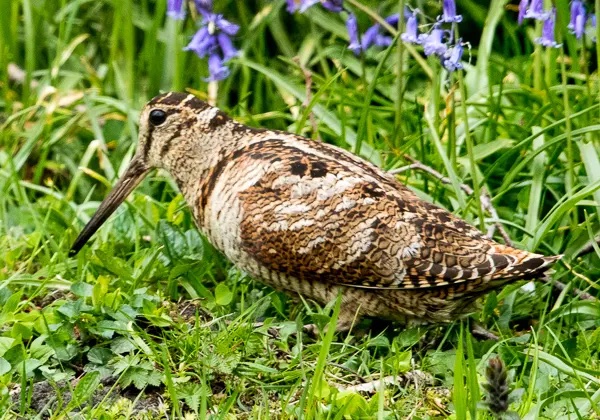Woodcock
- Home
- Why We Do It
- Conservation
- Woodcock
Key Facts
- Nests in slight hollow in leaves, under brambles or other cover in wooded areas
- 4 eggs, 1 brood, March – August
| Scientific Name: | Scolopax rusticola |
| Number in Britain: | 55,000 males |
| Conservation Status: | |
| in UK | Red |
| in Europe | Least Concern |
| Globally | Least Concern |

A thickset dumpy wader about 12/14 inches long the woodcock is with us for more of the year than any of the other waders.
Its numbers are supplemented by good numbers of migrants from Europe every year in November as they move to easier feeding grounds from the harsher climate of the north. The male is often seen displaying over its territory in the evening in early spring as it is the earliest breeding wader we have with eggs often laid before the end of March.
The eggs are pale brown with some darker brown markings on them. The bird itself is mainly brown in colour with a paler breast and black markings. It is another sporting bird prized for its flavour.
Four pale/mid buff eggs laid in a well-lined scrape, often within a woodland or dead bracken setting and unlike many other waders the woodcock like many game birds will not advertise it’s presence by alarm calling but if flushed will often feign a broken wing to try and lure predators away. The male takes no part in rearing the young.
